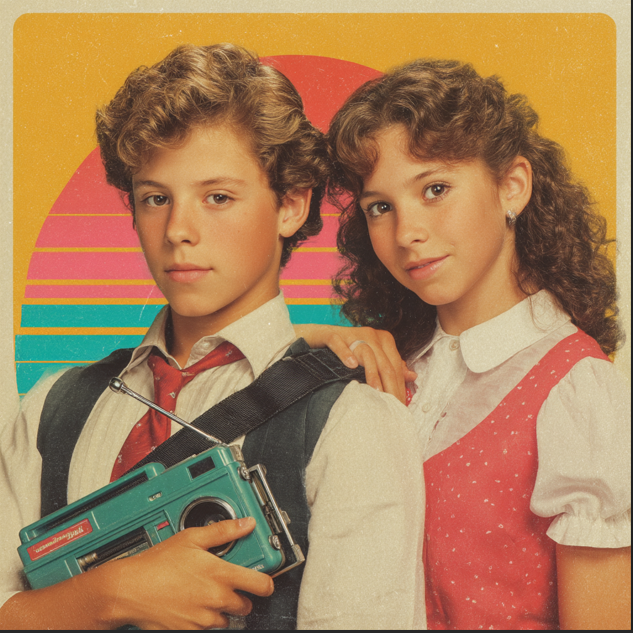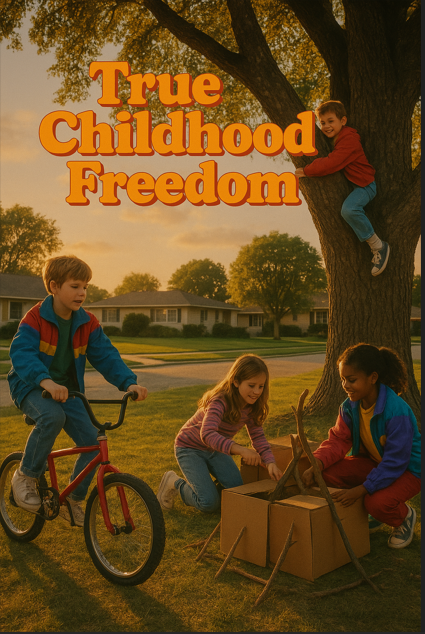
Growing up in the 80s created a unique childhood experience that many adults now look back on with deep nostalgia. This piece is for anyone who lived through that decade as a kid, parents curious about what childhood looked like before smartphones, and those interested in understanding why 80s generation nostalgia runs so deep.
The 1980s marked the final era when kids enjoyed complete childhood freedom without constant adult supervision or digital distractions. Children spent entire summer days outside, rode bikes until streetlights came on, and built friendships through face-to-face adventures rather than screens.
We’ll explore how unstructured play benefits shaped creative problem-solving skills that many feel are missing today. You’ll discover why technology-free childhood experiences fostered deeper community bonds 80s kids took for granted. We’ll also examine how outdoor adventures for kids and real-world learning experiences created a generation that learned independence, resilience, and social skills through trial and error rather than structured activities.
Those 80s childhood memories weren’t just fun – they represent a completely different approach to growing up that many believe created more resourceful, socially connected adults.
Unstructured Play and Endless Exploration
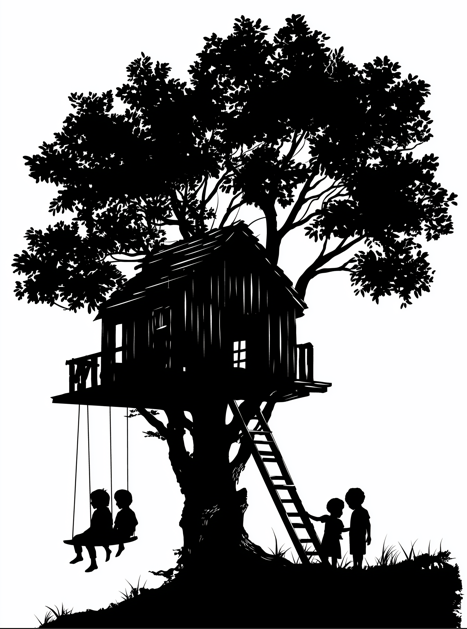
Building Forts and Treehouses Without Adult Supervision
The 1980s gave kids something that seems almost unthinkable today: complete autonomy over their construction projects. Armed with nothing but hammers borrowed from dad’s toolbox, mismatched nails, and whatever scrap wood they could find, children built elaborate forts that would make professional contractors cringe. These weren’t Pinterest-perfect playhouses with measured cuts and safety railings. They were gloriously imperfect creations held together by determination and duct tape.
Kids would spend entire summer days dragging plywood sheets across neighborhoods, negotiating with parents for spare lumber, and convincing older siblings to help lift heavy beams into tree branches. The process taught them real engineering principles through trial and error. When a wall collapsed or a roof leaked, they learned to reinforce joints and angle boards for better water runoff. No YouTube tutorials existed to guide them – just pure experimentation and the occasional wisdom from a neighbor who happened to walk by.
The best part? Parents rarely intervened. Moms might peer out kitchen windows to check that everyone still had all their fingers, but the actual construction remained a kid-only enterprise. This hands-off approach meant children developed genuine confidence in their abilities and learned to assess risks independently.
Creating Imaginative Games with Simple Household Items
Before gaming consoles dominated living rooms, growing up in the 80s meant transforming everyday objects into magical props. A cardboard box wasn’t just packaging – it was a spaceship, a castle, or a secret hideout. Kitchen pots became helmets for brave knights, while wooden spoons transformed into swords or magic wands depending on the day’s adventure.
80s childhood memories are filled with elaborate role-playing games that stretched for hours. Kids created entire universes using nothing more than bed sheets draped over furniture, flashlights for dramatic lighting, and their boundless imagination. They didn’t need expensive toys because they saw potential everywhere. Old magazines became treasure maps, empty containers turned into communication devices, and backyard sticks evolved into anything the story required.
This unstructured play taught children to see beyond an object’s intended purpose. They learned to think creatively, solve problems on the fly, and collaborate with friends to build shared fictional worlds. The games were never the same twice because they adapted based on available materials and the group’s collective mood.
Exploring Neighborhoods and Vacant Lots Freely
Childhood freedom in the 80s meant parents would send kids outside after breakfast with a simple instruction: “Be home when the streetlights come on.” This level of independence allowed children to become real explorers in their own neighborhoods. They discovered hidden paths through wooded areas, found the best climbing trees, and mapped out every interesting corner within a reasonable radius of home.
Vacant lots became treasure troves of discovery. Kids would spend hours examining interesting rocks, catching grasshoppers, or building temporary shelters from found materials. These spaces offered a sense of wilderness adventure even in suburban settings. Children learned to navigate by landmarks, judge distances, and develop an intimate knowledge of their local geography that GPS could never provide.
The freedom to roam also meant encountering unexpected situations that required quick thinking. Getting caught in a sudden rainstorm, finding a injured bird, or discovering something mysterious taught kids to make decisions and handle surprises without immediately running to adults for help.
Developing Problem-Solving Skills Through Independent Play
Technology-free childhood experiences forced kids to become resourceful problem-solvers. When their bike chain fell off miles from home, they learned to fix it themselves or figure out alternative transportation. If they wanted to reach a high tree branch, they had to engineer a solution using available materials rather than asking an adult to lift them up.
Group play naturally created conflicts that children had to resolve independently. Disagreements about game rules, fair sharing of materials, or hurt feelings required negotiation skills and emotional intelligence. Without adult mediators constantly stepping in, kids developed their own systems of fairness and learned to work through difficulties with their peers.
The unstructured play benefits extended far beyond entertainment. Children who spent hours building, exploring, and creating developed spatial reasoning skills, learned basic physics principles, and gained confidence in their ability to tackle challenges. They discovered that most problems have multiple solutions and that creativity often matters more than having the “right” materials or tools.
Technology-Free Social Connections
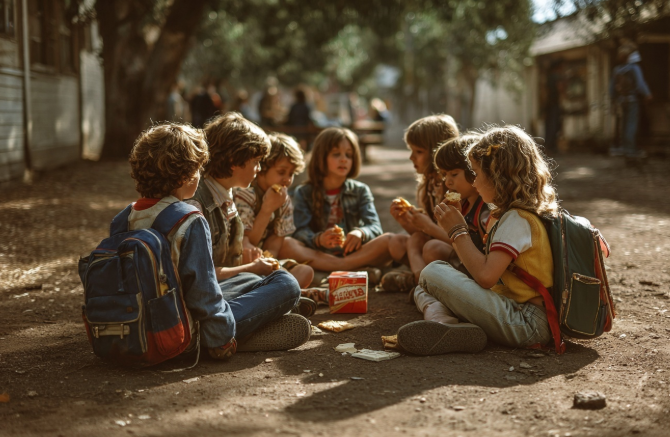
Face-to-face conversations without digital distractions
Back in the 80s, when friends got together, they actually talked to each other. No smartphones buzzed on the table, no notifications pinged in the background, and nobody scrolled through feeds while pretending to listen. Growing up in the 80s meant mastering the lost art of genuine conversation – looking someone in the eye, reading their facial expressions, and picking up on subtle cues that screens could never capture.
Kids would spend hours on the phone with friends, stretching the curly cord around corners for privacy, diving deep into conversations about everything and nothing. These weren’t quick text exchanges or emoji responses. They were real discussions where you learned how your friends thought, what made them laugh, and how they processed the world around them. The telephone became a lifeline to friendship, but it required commitment – you couldn’t just ghost someone mid-conversation or hide behind a carefully crafted message.
When friends hung out in person, the focus stayed entirely on each other. Conversations flowed naturally from one topic to another, building stronger emotional bonds through undivided attention. Kids learned to be present in the moment, developing social skills that came from reading body language, understanding tone of voice, and responding to immediate feedback from their peers.
Organizing spontaneous group activities and games
The magic of 80s childhood memories lies in how effortlessly kids could rally their entire neighborhood for impromptu adventures. Without group chats or scheduling apps, children developed remarkable organizational skills through pure word-of-mouth coordination. Someone would get an idea – maybe a game of capture the flag or a bike ride to the creek – and within an hour, half the street would be involved.
This spontaneous gathering required real leadership and communication skills. One kid might run door-to-door spreading the word, while another figured out the rules or gathered necessary supplies. Everyone had to negotiate in real-time, compromise on activities, and work together to make things happen. These unstructured play benefits taught children how to be flexible, inclusive, and creative with limited resources.
The beauty of these spontaneous activities was their unpredictability. Plans changed on the fly based on who showed up, what materials were available, or simply because someone had a better idea. Kids learned to adapt quickly and find joy in unexpected directions. Whether it turned into an elaborate neighborhood-wide game of tag, an impromptu talent show in someone’s backyard, or a treasure hunt through local woods, these activities fostered incredible problem-solving abilities and social confidence.
Building deeper friendships through shared physical experiences
Technology-free childhood meant friendships were built through shared adventures rather than shared screens. Kids in the 80s created lasting bonds by facing challenges together – whether that meant building the perfect fort, surviving a particularly intense game of dodgeball, or working as a team to explore forbidden territories like abandoned buildings or dense forest areas.
These physical experiences created powerful emotional connections. When you and your best friend spent an entire summer afternoon trying to perfect your bike jumps over homemade ramps, you weren’t just playing – you were creating trust, learning about each other’s limits, and building memories that would last decades. The scrapes, bruises, and victories were shared equally, creating an unbreakable foundation of mutual experience.
Friendships formed through real-world learning experiences had depth that digital relationships often lack. Kids knew exactly how their friends reacted under pressure, who could be counted on during tough moments, and who brought out their best qualities during group activities. They understood each other’s personalities not through carefully curated social media profiles, but through countless hours of unfiltered interaction in various situations.
The physical nature of these friendships meant they were tested regularly. Friends had to work through disagreements face-to-face, learn to forgive quickly, and develop conflict resolution skills that served them throughout their lives. They couldn’t simply block someone or avoid uncomfortable conversations – they had to navigate complex social dynamics in real-time, creating stronger, more resilient relationships built on genuine understanding and shared history.
Outdoor Adventures and Physical Freedom
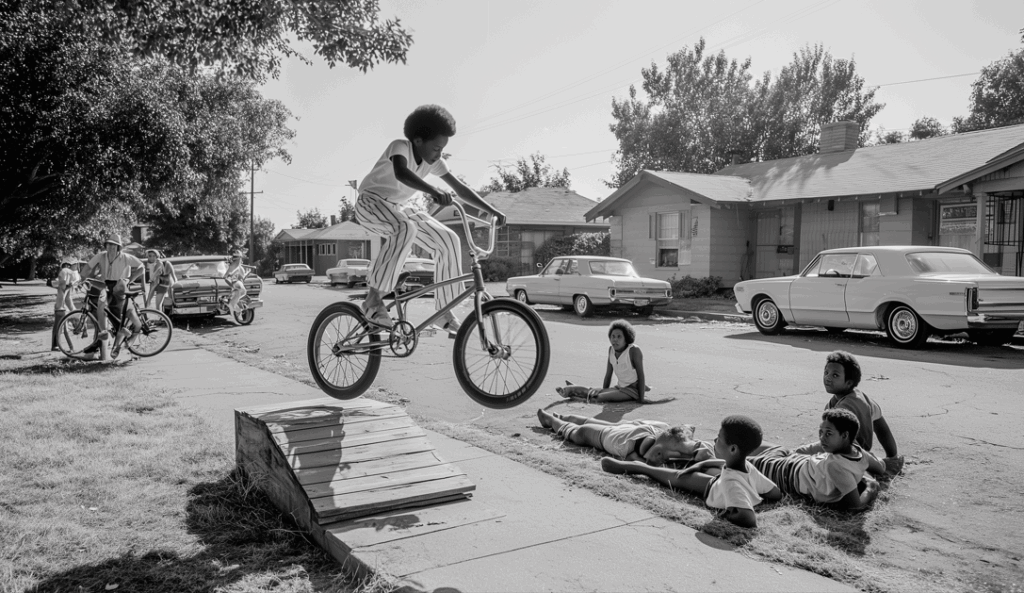
Riding Bikes Across Town Without GPS Tracking
Picture this: grabbing your BMX or ten-speed bike on a Saturday morning and pedaling off into the unknown with nothing but a vague sense of direction and boundless curiosity. Growing up in the 80s meant navigating neighborhoods, discovering hidden shortcuts, and memorizing street names through pure exploration. Kids would venture miles from home, following train tracks, discovering new parks, or chasing down ice cream trucks without parents tracking their every movement through smartphone apps.
This freedom built incredible street smarts and spatial awareness. We learned to read landmarks, remember turns, and develop an internal compass that today’s GPS-dependent generation often lacks. Getting temporarily lost wasn’t a crisis—it was an adventure that taught problem-solving and self-reliance. These outdoor adventures for kids created confident, resourceful individuals who could navigate any environment.
Spending Entire Days Outside Until Streetlights Came On
Summer days stretched endlessly when the only rule was to come home when the streetlights flickered to life. Childhood freedom in the 80s meant disappearing after breakfast and returning only for lunch (maybe) and dinner. Parents trusted their children to manage time, find entertainment, and stay safe without constant supervision.
This unstructured time allowed kids to follow their natural rhythms and interests. Some days might involve intense games of hide-and-seek spanning multiple backyards, while others featured quiet moments collecting rocks or watching clouds. The beauty lay in having no agenda, no scheduled activities, and no digital distractions pulling attention away from the present moment.
These marathon outdoor sessions built incredible endurance and taught children to entertain themselves using imagination and the environment around them. Boredom became a catalyst for creativity rather than a signal to reach for electronic entertainment.
Climbing Trees and Taking Calculated Risks
Every neighborhood had “that tree”—the massive oak or maple that served as a natural jungle gym for adventurous kids. 80s childhood memories are filled with scaling bark-covered heights, building tree forts, and learning to assess risk through experience rather than warning labels.
Children developed intuitive understanding of their physical capabilities by testing limits in relatively safe environments. A scraped knee or minor tumble taught lessons about physics, balance, and personal boundaries that no safety manual could convey. Parents generally understood that minor injuries were part of growing up strong and confident.
This hands-on risk assessment created adults who could evaluate situations independently and make sound decisions under pressure. The 80s generation nostalgia often centers on these moments of conquering fears and discovering personal courage through physical challenges.
Discovering Nature Without Screen-Based Entertainment
Before nature documentaries became the primary way children learned about wildlife, 80s kids experienced ecosystems firsthand. Catching fireflies in mason jars, hunting for four-leaf clovers, observing ant colonies, and identifying bird calls happened naturally during unstructured outdoor time.
Seasons held genuine significance when outdoor play was the primary entertainment source. Spring meant flowers to pick and mud puddles to explore. Summer brought berry picking and stream wading. Fall provided leaf piles to jump in and acorns to collect. Winter transformed familiar landscapes into snow fort kingdoms.
This direct connection with natural cycles and local wildlife fostered deep environmental awareness and appreciation that often lasted lifetimes. Children learned patience by waiting for tadpoles to become frogs and responsibility by caring for captured caterpillars until they transformed into butterflies.
Building Physical Strength and Coordination Naturally
Technology-free childhood activities naturally developed gross and fine motor skills through varied, engaging movements. Hopscotch improved balance and precision. Jump rope built cardiovascular fitness and timing. Tag games developed speed and agility. Monkey bars strengthened upper bodies while teaching persistence.
These activities happened organically during play rather than as structured exercise routines. Children didn’t think about “getting fit”—they simply moved their bodies in ways that felt fun and challenging. This approach created positive associations with physical activity that often continued into adulthood.
The variety of movements—running, jumping, climbing, balancing, throwing, catching—ensured comprehensive physical development that specialized sports programs sometimes miss. Bodies became naturally strong and capable through diverse, enjoyable activities rather than repetitive training regimens.
Creative Expression Without Digital Dependence

Drawing, painting, and crafting with basic materials
Back when growing up in the 80s meant raiding your mom’s kitchen junk drawer for crafting supplies, creativity bloomed from whatever you could find lying around the house. Kids turned empty cereal boxes into elaborate dollhouses, transformed toilet paper rolls into binoculars for backyard adventures, and created masterpieces with nothing more than crayons, construction paper, and maybe some Elmer’s glue.
The beauty of creative expression without screens came from working with your hands and seeing immediate, tangible results. You’d spend hours at the kitchen table, surrounded by scraps of fabric your mom saved from sewing projects, bottle caps collected from family barbecues, and those precious stickers you’d been hoarding for the perfect project. Every art creation became a treasure because you put actual time and effort into making it exist in the real world.
Paint sets came with those tiny watercolor squares that you’d mix on paper plates, creating muddy browns when you got too enthusiastic mixing colors. The satisfaction of watching colors blend and bleed across paper taught you about patience and experimentation in ways that digital art tools simply can’t replicate. Your fingers would be stained with marker ink for days, serving as badges of honor for your creative endeavors.
Writing stories and creating comics by hand
Before spell-check existed, kids who loved storytelling filled countless notebooks with handwritten adventures. The physical act of writing forced you to think through your words more carefully. When making a mistake meant starting over or dealing with messy eraser marks, every sentence carried more weight.
Creating comics meant drawing panel after panel, developing characters through countless sketches, and crafting dialogue that fit within hand-drawn speech bubbles. You’d spend weekends hunched over your desk, developing epic storylines featuring superheroes with names like “Lightning Larry” or “Super Sarah.” The slowness of the process meant your imagination had time to develop and evolve each character fully.
80s childhood memories are filled with the special feeling of completing a hand-illustrated story. You’d staple the pages together, create a colorful cover, and proudly display your finished book on your bedroom shelf. Friends would trade stories, creating mini-libraries of original works that showcased each child’s unique perspective and artistic style.
Building models and conducting science experiments
Model airplanes, cars, and ships required careful attention to detail and the ability to follow complex instructions. You’d spread newspapers across the floor, organize tiny plastic pieces by size, and work methodically through each step. The smell of model glue became synonymous with focused concentration and the anticipation of seeing your finished creation.
Science experiment kits came with real chemicals and equipment that taught genuine scientific principles. Chemistry sets included actual test tubes, beakers, and substances that could create surprising reactions when combined correctly. Kids learned to measure precisely, observe changes carefully, and document results in handwritten lab notebooks.
Building crystal gardens, volcano models, and simple electronics projects meant waiting days or weeks to see final results. This waiting period taught valuable lessons about delayed gratification while building genuine scientific curiosity. The hands-on nature of these experiments made abstract concepts concrete and memorable.
Developing patience through hands-on projects
Technology-free childhood experiences naturally built patience because nothing happened instantly. Completing a 1,000-piece jigsaw puzzle meant weeks of sorting colors, testing pieces, and slowly watching the image emerge. Cross-stitch projects, friendship bracelets, and paint-by-number artworks all required sustained attention and careful, methodical work.
The satisfaction of completing these long-term projects created a sense of accomplishment that quick digital wins can’t match. Kids learned to work steadily toward goals, handle frustration when projects didn’t go as planned, and appreciate the value of persistence. This patience training served them well in academic pursuits and later professional endeavors.
Family Time and Community Bonds

Shared meals without phone interruptions
Dinner in the 80s meant gathering around the kitchen table with everyone present – both physically and mentally. There were no smartphones buzzing with notifications, no tablets propped against salt shakers, and certainly no one scrolling through social media between bites. The dining table served as the family’s daily reunion spot where conversations flowed naturally and connections deepened organically.
Parents shared stories from their workday while kids recounted playground adventures and classroom drama. These uninterrupted conversations allowed families to truly listen to each other, picking up on subtle cues and emotions that today’s distracted dinner environments often miss. The simple act of making eye contact while talking created stronger emotional bonds and taught children valuable communication skills.
Sunday family dinners were especially sacred, often lasting hours as multiple generations gathered to share homemade meals and catch up on each other’s lives. Grandparents told stories from their youth, parents discussed neighborhood happenings, and children learned to engage in adult conversations. This natural flow of dialogue across age groups created rich learning opportunities and strengthened family identity.
Neighborhood watch culture where everyone knew each other
Growing up in the 80s meant living in neighborhoods where privacy didn’t mean isolation. Mrs. Johnson next door knew when your parents went out of town, Mr. Peterson across the street could identify every car that belonged on the block, and the elderly couple down the lane remembered everyone’s birthdays. This interconnected community bonds 80s style created an invisible safety net that made childhood feel secure and adventurous simultaneously.
Children could roam freely because multiple sets of eyes watched over them. If you scraped your knee three blocks from home, chances were good that someone would recognize you and either patch you up themselves or walk you home. Parents felt comfortable letting kids explore because they knew the community would step in if needed.
This network also meant accountability. Bad behavior rarely went unnoticed, and news of misbehavior often reached parents before kids made it home. While sometimes frustrating for children, this system taught respect for community standards and helped young people understand their place in the larger social fabric.
The genuine care neighbors showed for each other extended beyond child supervision. During emergencies, illnesses, or family crises, neighbors naturally stepped in with casseroles, babysitting offers, or whatever help was needed. These bonds created lasting friendships and taught children the value of looking out for others.
Multi-generational storytelling and wisdom sharing
Evenings often brought families together in living rooms where grandparents became the evening’s entertainment through their storytelling. These weren’t rehearsed presentations but spontaneous sharing sessions sparked by something on the news, a family photo, or simply a child’s curious question. 80s childhood memories were enriched by these intergenerational exchanges that connected past, present, and future.
Grandparents shared tales of walking to school in harsh weather, living through the Great Depression, or witnessing historical events firsthand. These stories weren’t just entertainment – they were living history lessons that textbooks couldn’t match. Children learned about resilience, resourcefulness, and family heritage through these personal narratives.
The wisdom sharing went beyond storytelling. Grandparents taught practical skills like cooking family recipes, gardening techniques, or basic repair skills. These hands-on learning sessions created special bonds while passing down valuable knowledge that might otherwise be lost.
Parents also contributed their own stories from their younger days, creating bridges between generations and helping children understand that adults were once young and faced similar challenges. This sharing created empathy and understanding while reinforcing family values and traditions.
Participating in local events and traditions
80s generation nostalgia often centers around the rich tapestry of local events that brought entire communities together. Annual block parties, Fourth of July parades, school carnivals, and holiday celebrations weren’t just calendar entries – they were cornerstone experiences that strengthened neighborhood bonds and created lasting memories.
These events required community participation to succeed. Families volunteered to organize games, prepare food, or coordinate activities. Children saw their parents working alongside neighbors toward common goals, demonstrating cooperation and civic responsibility in action. This participation taught young people that strong communities don’t happen automatically – they require active engagement from everyone.
Local traditions often spanned generations, with recipes, decorating themes, or specific activities passed down through families. The annual church picnic might feature the same potato salad recipe that someone’s grandmother brought decades earlier, or the neighborhood Halloween party might follow traditions established by the original residents.
These gatherings created shared experiences that bonded people across different backgrounds and circumstances. Children who might not otherwise interact found common ground during community events, and adults discovered shared interests and values. The resulting community bonds 80s style extended far beyond individual friendships to create genuine neighborhood identity and pride.
Learning Through Real-World Experiences
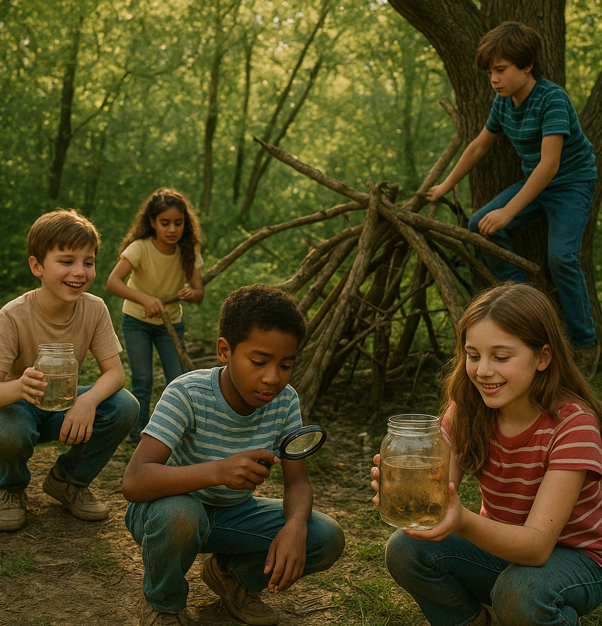
Developing Navigation Skills Without GPS Assistance
Children growing up in the 80s developed an innate sense of direction that today’s GPS-dependent generation simply doesn’t possess. Getting lost wasn’t catastrophic—it was educational. Kids memorized landmarks like the old oak tree at Miller’s corner, the red barn with the missing door, or the house with the peculiar purple shutters. These visual anchors became mental maps that lasted a lifetime.
The ritual of asking for directions taught social skills alongside navigation. Approaching strangers required courage, clear communication, and the ability to listen carefully to sometimes convoluted explanations involving phrases like “turn left where the old gas station used to be.” This interaction built confidence and demonstrated that most people were genuinely helpful when approached respectfully.
Map reading became second nature. Families kept dog-eared atlases in glove compartments, and kids learned to trace routes with their fingers, calculating distances and identifying alternate paths. The satisfaction of successfully navigating to a new destination using only paper maps and observation skills created a sense of genuine accomplishment that modern turn-by-turn directions simply can’t replicate.
Managing Time Naturally Without Constant Scheduling
Time flowed differently for 80s childhood memories enthusiasts. Kids operated on natural rhythms rather than digital precision. They learned to gauge time by shadows lengthening across the yard, the rumble of approaching dinner preparation, or the familiar sound of parents calling from porches as streetlights flickered on.
This organic time management fostered remarkable internal clocks. Children instinctively knew when to head home, when friends would likely be available for play, and how long different activities would take. They developed patience and learned that some things couldn’t be rushed—like waiting for Saturday morning cartoons or the weekly trip to the corner store.
Without constant scheduling, kids discovered the luxury of boredom and the creativity it sparked. Empty afternoons stretched endlessly, presenting opportunities for spontaneous adventures. This unstructured approach to time taught valuable lessons about prioritization, flexibility, and the art of being fully present in the moment rather than constantly checking what came next.
Learning From Mistakes Without Immediate Rescue
The technology-free childhood of the 1980s meant children faced consequences head-on. When bikes broke down miles from home, kids learned basic repair skills or figured out creative solutions like walking the bike to the nearest friendly house. These moments of minor crisis built problem-solving abilities and self-reliance.
Parents weren’t instantly reachable through cell phones, so children developed judgment about when situations truly required adult intervention versus when they could handle problems independently. This autonomy taught risk assessment and decision-making skills that served them well into adulthood.
Mistakes carried natural consequences without immediate parental intervention to soften the blow. Forgetting lunch money meant going hungry or learning to negotiate with cafeteria staff. These experiences, while sometimes uncomfortable, taught responsibility and forward thinking in ways that helicopter parenting simply cannot match.
Building Resilience Through Minor Setbacks and Challenges
Real-world learning experiences during the 1980s included countless small failures that built emotional resilience. Scraped knees from bicycle crashes taught kids to assess injuries, clean wounds, and bounce back quickly. Social disappointments like not being picked for a team or experiencing friendship conflicts were worked through without extensive adult mediation.
Weather rarely stopped outdoor activities. Kids learned to adapt to conditions, finding ways to have fun in rain, snow, or extreme heat. This adaptability extended beyond weather to encompass mechanical failures, plan changes, and unexpected obstacles that required creative solutions and mental flexibility.
The absence of participation trophies meant that achievements felt genuinely earned. Winning required effort, practice, and sometimes multiple attempts. This reality prepared children for adult life’s genuine challenges while building authentic self-confidence based on actual accomplishments rather than artificial praise.

The 80’s gave kids something that’s become increasingly rare today: real freedom to just be kids. From riding bikes until the streetlights came on to building forts in the woods, children had the space to explore, create, and connect in ways that shaped them into resourceful, independent adults. Without smartphones buzzing in their pockets or social media defining their worth, they learned to entertain themselves, solve problems on their own, and build genuine friendships through shared adventures.
That magical combination of unstructured time, outdoor exploration, and tight-knit community bonds created childhood memories that still warm hearts decades later. While we can’t turn back time, we can learn from what made those years so special. Give today’s kids more unstructured play time, encourage them to explore the world beyond screens, and create opportunities for real face-to-face connections. The magic of childhood doesn’t have to be lost to technology – it just needs to be protected and nurtured with the same care our parents gave us when they told us to “go play outside and be back by dinner.”
P.S. Curious about how life was in other decades? Become a Time Genius yourself! Head to our homepage, input any year, and our AI will generate a personalized report on the major events, economics, and culture of the time. It’s history, personalized.
